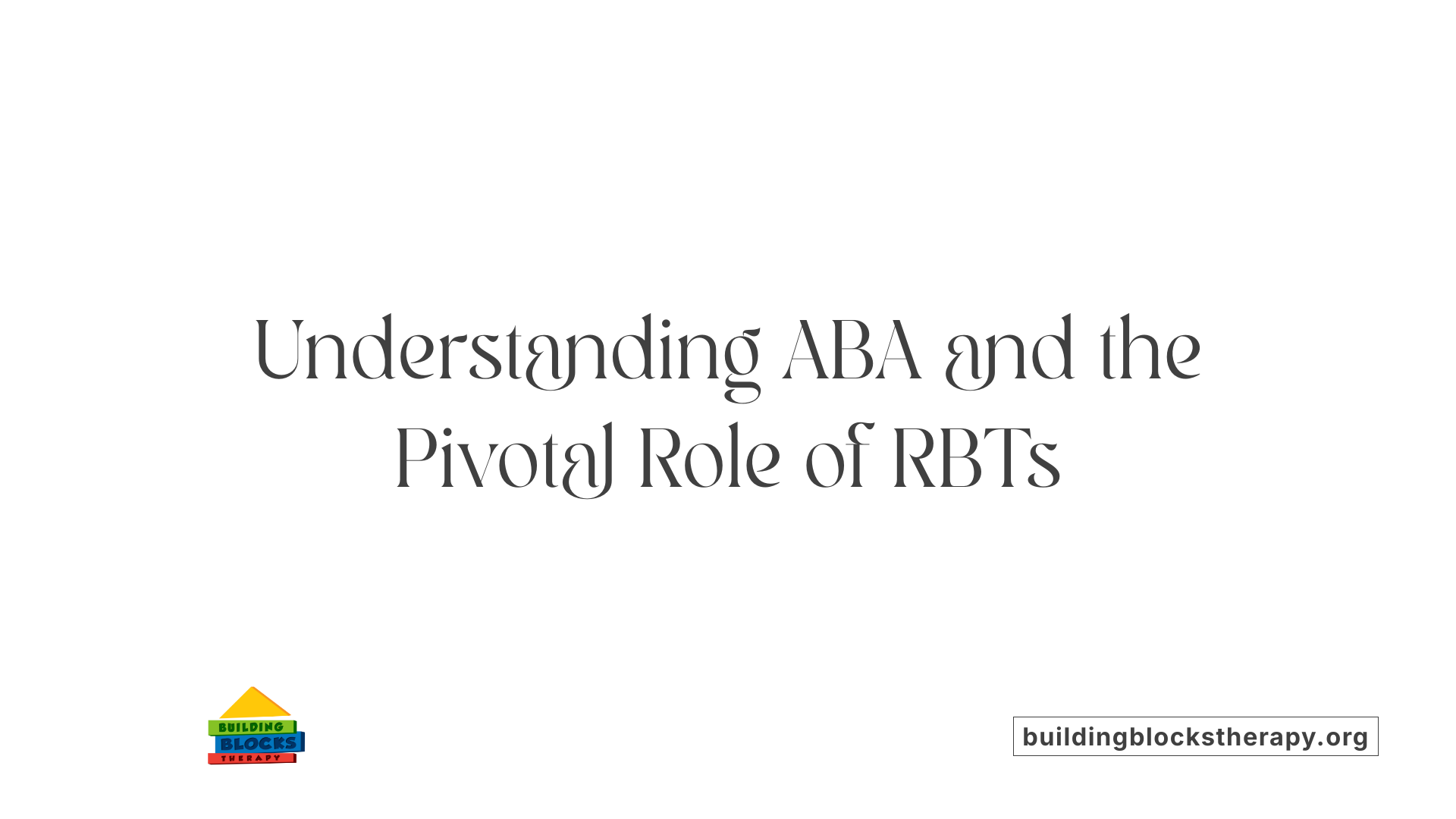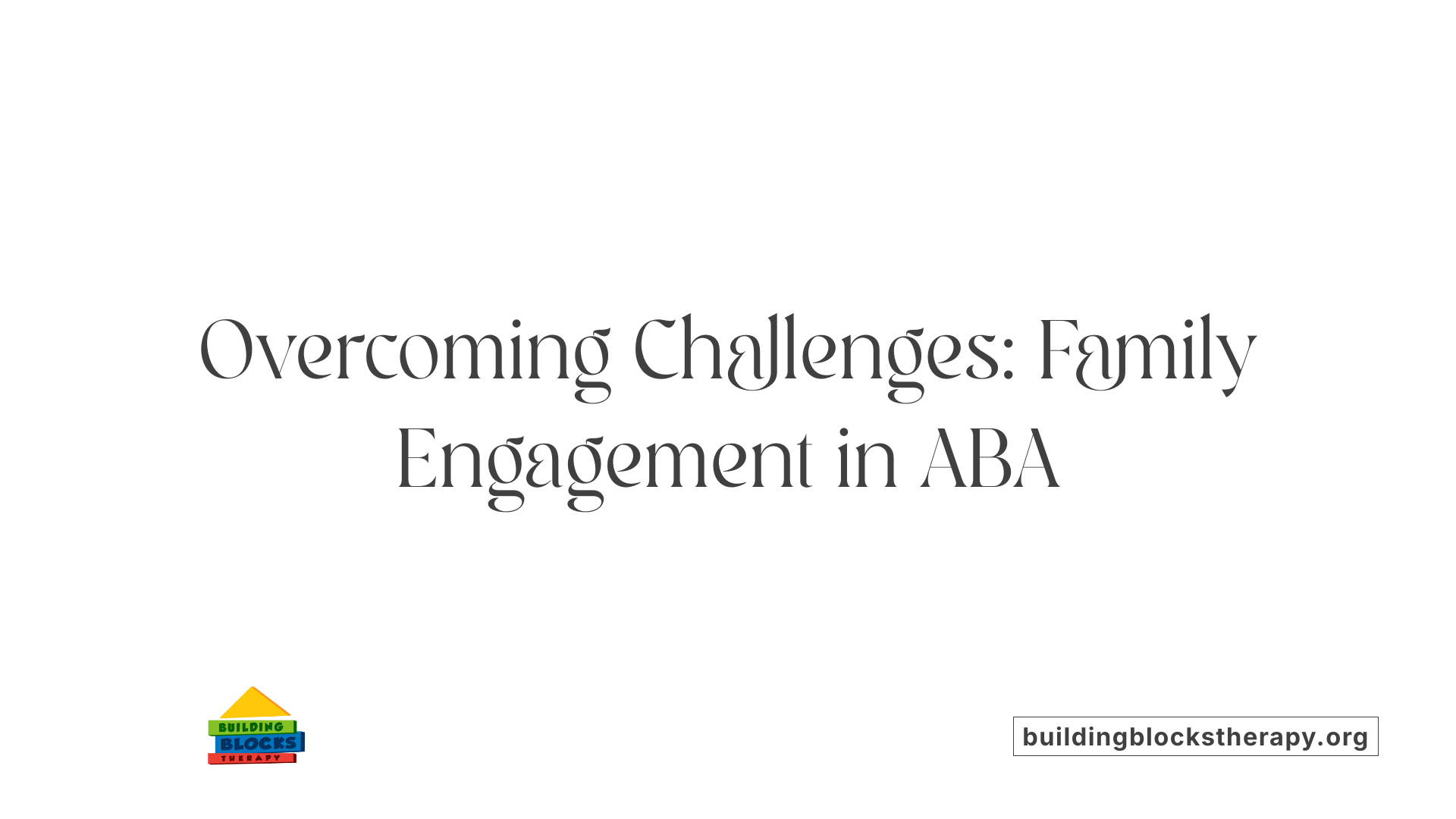Understanding the Role of a Registered Behavior Technician (RBT)
Registered Behavior Technicians play a crucial role in delivering Applied Behavior Analysis (ABA) therapy, particularly for children on the autism spectrum. This article explores typical interview questions and answers designed to help prospective RBTs prepare comprehensively for their roles. We delve into the nature of ABA therapy, the qualifications required, common techniques used, evaluation methods, and challenges faced by families and professionals alike, providing a solid foundation for interview preparation and on-the-job success.
Foundations of ABA Therapy and the Role of RBTs

What is Applied Behavior Analysis (ABA) therapy and how does it help individuals with autism?
Applied Behavior Analysis (ABA) therapy is a science-based approach focused on understanding and improving behaviors using learning principles, especially positive reinforcement. It helps individuals with autism by developing essential skills like communication, social interaction, and daily living abilities. ABA therapy breaks down behaviors through analyzing what triggers them, how the individual responds, and the consequences of those behaviors, allowing tailored interventions that encourage positive changes.
Early and intensive ABA, often starting between ages 2 and 6, supports gains in language, academics, and adaptive skills, significantly enhancing the quality of life and independence for those on the autism spectrum.
What is the role of RBTs in implementing ABA under BCBA supervision?
Registered Behavior Technicians (RBTs) are frontline professionals who implement ABA therapy plans created by certified behavior analysts (BCBAs). They work directly with clients to follow behavioral health plans, teach new skills, reduce challenging behaviors, and nurture social abilities. RBTs also collect data to monitor treatment progress and inform caregivers about findings. Importantly, all their work is supervised by BCBAs, ensuring interventions remain effective and ethical.
Their duties extend to supporting families through counseling and daily communication strategies, helping strengthen consistency and generalization of learned skills across environments.
In what settings do RBTs operate?
RBTs work in a broad range of settings to best meet client needs. These include:
- Clinics and hospitals
- Schools and classrooms
- Mental health facilities
- Client homes
- Community environments
This flexibility allows RBTs to tailor interventions directly within the individual's living or learning environments, promoting real-world skill application and generalization.
What client populations do RBTs serve?
While RBTs primarily support children on the autism spectrum, their role spans individuals with various behavioral and developmental challenges such as ADHD, social disorders, and mental health conditions. Their interventions aim to improve social communication, problem-solving, and behavior, helping clients across a wide range of needs to achieve greater independence and well-being.
Qualifications and Professional Structure for ABA Providers

Who typically provides ABA therapy and what qualifications do these professionals have?
ABA therapy is generally administered by professionals holding specific certifications that qualify them to deliver and oversee behavioral interventions. The primary providers are Board Certified Behavior Analysts (BCBAs), who possess graduate-level education in fields such as Psychology, Education, or Applied Behavior Analysis, combined with supervised experience and rigorous coursework in ABA. BCBAs are responsible for designing, supervising, and evaluating individualized treatment plans for clients with autism spectrum disorder and other behavioral challenges.
Supporting the BCBAs are Registered Behavior Technicians (RBTs), paraprofessionals certified by the Behavior Analyst Certification Board (BACB). RBTs implement the behavior plans directly with clients across various settings, including homes, clinics, schools, and hospitals, always under the supervision of a BCBA. Their duties involve collecting behavioral data, teaching social and communication skills, assisting with behavior reduction, and engaging with families to support skill generalization.
Hierarchy and supervision structure of ABA professionals
The typical ABA professional hierarchy begins with the BCBA as the clinical supervisor and treatment designer, who oversees multiple RBTs carrying out day-to-day interventions. This structure promotes high treatment fidelity and ethical practice while ensuring individualized care for clients.
Educational background and supervised experience
To become a BCBA, candidates must complete graduate-level education and accrue supervised fieldwork hours that provide hands-on experience with ABA techniques. RBT candidates complete training and competency assessments to qualify for certification, focusing on practical skills needed for behavior intervention implementation under BCBA guidance.
Ongoing professional development and certification maintenance
Both BCBAs and RBTs engage in continuous professional learning and supervision to maintain certification. This includes annual renewal requirements and staying current with advances in behavioral therapy methods and ethical standards, ensuring that interventions reflect best practices and client-centered care.
Key ABA Techniques and Therapies Delivered by RBTs

What are some common techniques used in ABA therapy to support behavior change in individuals with autism?
Registered Behavior Technicians (RBTs) employ a variety of ABA therapy techniques designed to encourage positive behavior change and skill acquisition tailored to each individual's needs. One fundamental method is positive reinforcement, where desired behaviors are rewarded to increase their frequency. This might include verbal praise, tokens, or preferred activities.
Prompting is another core technique, involving cues like gestures, visual aids, or verbal instructions to encourage behavior initiation. Importantly, prompts are systematically faded over time to help individuals perform tasks independently.
To teach complex behaviors, RBTs use behavior chaining and task analysis. Behavior chaining breaks a skill into smaller, manageable steps taught in sequence, while task analysis involves decomposing tasks systematically to ensure mastery of each component.
Additional strategies include modeling, where RBTs demonstrate behaviors for imitation, and script fading, which gradually reduces reliance on rehearsed verbal scripts to build spontaneous communication. Behavior contracts establish clear expectations between individuals and caregivers or educators.
Therapists also utilize natural environment teaching, embedding learning opportunities in everyday settings, and redirection strategies to gently guide individuals away from undesired behaviors toward appropriate alternatives.
Overall, these techniques—implemented under the supervision of a Board Certified Behavior Analyst (BCBA)—are tailored to each client's unique goals, helping foster meaningful, lasting behavioral improvements and enhanced social skills.
Data-Driven Evaluation and Ongoing Documentation in ABA

How is the effectiveness of ABA therapy evaluated over time?
The effectiveness of Applied Behavior Analysis (ABA) therapy is assessed mainly through continuous and systematic data collection. Registered Behavior Technicians (RBTs) play an essential role in this process by observing behaviors, collecting detailed data on skill acquisition and behavior reduction, and documenting treatment progress meticulously. This ongoing documentation helps track changes in the individual's target behaviors and their overall development.
Standardized tools like the Patient Outcome Planning Calculator (POP-C) enhance this evaluation by analyzing factors such as symptom severity, communication abilities, and the presence of challenging behaviors. These tools provide a structured framework that guides decisions about treatment intensity—allowing clinicians to adjust therapy plans dynamically in response to the individual's progress.
Additionally, the use of validated outcome measurement frameworks, such as the BHCOE ABA Outcomes Framework™, enables consistent monitoring and benchmarking of treatment results across various settings and providers. Such frameworks support transparency and help maintain treatment quality.
Beyond data collection, RBTs are responsible for communicating progress and findings to families and caregivers. This communication often involves explaining data trends, discussing intervention outcomes, and collaborating on daily protocols and strategies to support generalization of skills.
Through this data-driven and collaborative approach, ABA therapy remains personalized, evidence-based, and effective over time, ensuring that interventions adapt to the evolving needs of children on the autism spectrum or with other behavioral challenges.
Challenges in ABA Therapy and Family Engagement

What challenges do families and individuals often face when engaging in ABA therapy?
Engaging in Applied Behavior Analysis (ABA) therapy presents several challenges for families and individuals alike. One major difficulty is the significant time and stress demands. ABA therapy often requires many hours per week, which can strain family schedules and emotional resources.
Client resistance is another common obstacle. Children may refuse participation, exhibit disruptive behaviors, or show a lack of engagement. Overcoming this requires therapists, including Registered Behavior Technicians (RBTs), to build strong rapport, use motivating interests, and employ creative engagement strategies to encourage cooperation.
Maintaining consistency across diverse environments—such as home, school, and clinics—is crucial but challenging. Differences in routines and caregivers can lead to inconsistent implementation of behavior plans. Effective communication among caregivers, use of visual supports, and clear protocols can help achieve the consistency necessary for steady progress.
Progress in ABA therapy can be slow and nonlinear. Families often face setbacks such as behavioral regression or emotional distress from the child. Patience and resilience are essential, as setbacks require prompt reassessment and adaptive strategies by the therapy team.
Ethical and individualized care considerations also arise. Families may worry about the intensity or focus of interventions and desire therapy that respects the child’s needs and dignity. RBTs, under BCBA supervision, continuously adapt interventions to ensure they are ethically sound and tailored to each individual, providing support for both skill acquisition and behavior reduction without compromising the child’s well-being.
These challenges, while significant, can be managed through strong collaboration between families and professionals, ongoing communication, and flexible, compassionate approaches to care.
Mastering the RBT Interview and Beyond
Preparing for an interview as a Registered Behavior Technician involves understanding the core principles of ABA therapy, the qualifications and roles within behavioral analysis, and the techniques fundamental to skill acquisition and behavior reduction. Candidates should also be familiar with evaluation methods that track therapy progress and openly acknowledge the challenges faced by families and professionals during treatment. Equipped with this knowledge, future RBTs can confidently demonstrate their readiness to contribute effectively to the multidisciplinary teams that support individuals with autism and related behavioral needs, ultimately fostering positive outcomes and meaningful improvements in quality of life.
References
- RBT job description | Autism Resources
- Registered Behavior Technician Jobs | RBT Job Description
- A Tool for Determining Treatment Dosage in Applied Behavior ...
- BHCOE Gives Autism Field a Needed Boost in Measuring ...
- ABA Techniques: Strategies for Behavior Analysts - GSEP Blog
- ABA Therapy Examples, Definition & Techniques
- Applied Behavior Analysis (ABA)






